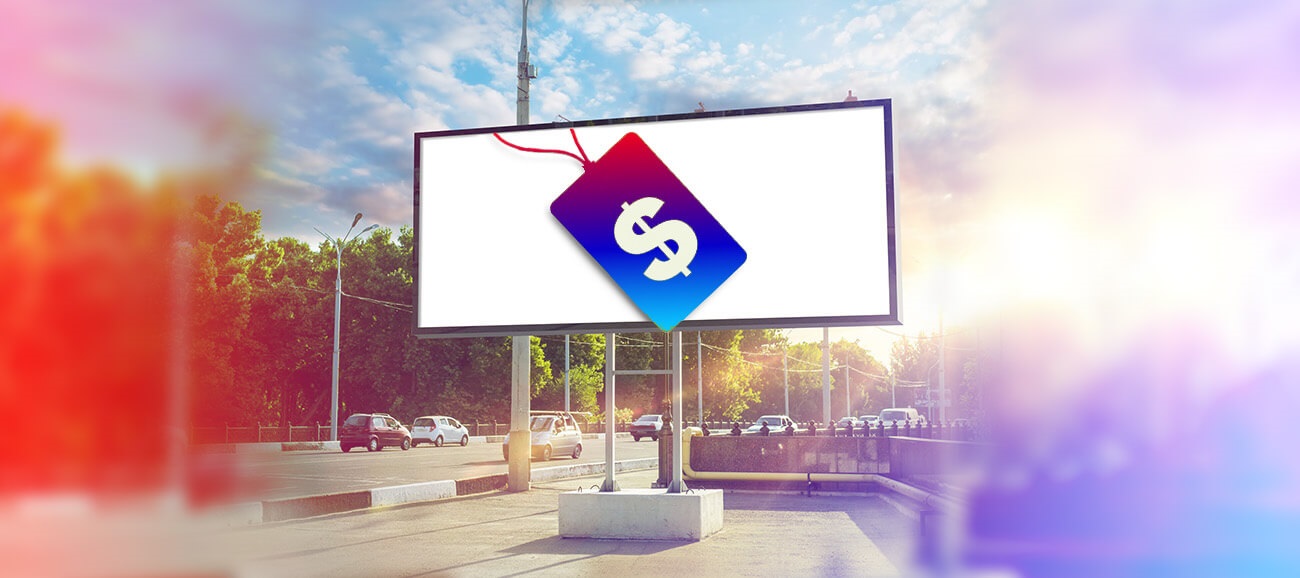Choosing the right advertising medium for a brand can often feel like a complex task. Choices are abundant, from more traditional avenues like TV and radio advertising to more public-facing options such as outdoor advertising. Each medium brings its own advantages and challenges, which means that making the right decision isn’t always straightforward.
It’s tempting to jump on whatever platform seems to be trending or has the widest reach. But, in reality, selecting an advertising medium requires a bit more thought. Keep reading this blog to learn more about different types of advertising and how to find the perfect one for your business.
Different Types of Advertising Media
It’s worth noting that advertising isn’t a “one size fits all” scenario. Different media suit different kinds of businesses and marketing goals. The key is understanding the subtle differences and determining which might best fit your brand’s needs.
TV Advertising
TV advertising has long been a go-to for brands aiming for mass visibility. The combination of moving images, sound, and storytelling allows brands to create a memorable experience for viewers.
One of the reasons TV advertising in Sydney still matters is its sheer reach. Even with the rise of streaming and on-demand content, television remains a fixture in many households. Additionally, TV advertising offers the chance to target not just large audiences but also specific segments through strategic scheduling; for example, sports fans, family viewers, or news watchers. For brands wanting to build awareness quickly and broadly, TV can be a powerful tool.
However, it’s important to remember that TV advertising can be expensive. Production costs, as well as the price of prime-time slots, can add up fast. So, if budgets are limited, it might be worth considering the timing and scale carefully. Moreover, TV advertising typically requires a well-crafted creative to stand out. It’s not just about flashing a logo on screen but telling a story that connects emotionally.
Interestingly, the impact of TV advertising in Sydney isn’t just about the immediate sales boost; it often shapes long-term brand perception. People tend to associate TV ads with credibility, which might be harder to build with newer, flashier digital ads.
Outdoor Advertising
Outdoor advertising is another traditional but popular choice. This medium covers everything from billboards and posters to transit ads on buses and trains, as well as signage at shopping centres and public spaces. What makes outdoor advertising in Australia unique is its ability to capture attention in real-world settings where people spend their daily lives.
This kind of advertising can be especially effective in urban centres like Sydney, where commuters, shoppers, and tourists constantly move through public spaces. For brands wanting to establish local presence or reinforce brand recognition, outdoor advertising in Australia offers a constant visual reminder that can’t be skipped or scrolled past like online ads.
There’s a certain rawness to outdoor advertising that’s appealing. It doesn’t demand undivided attention, as people see it as they go about their day. This passive exposure, repeated frequently, often leads to higher recall over time.
On the flip side, outdoor advertising requires careful design. The message must be concise and instantly understandable; there’s no time for complex storytelling here. Also, placement is crucial; an ad stuck on a less visible street or poorly maintained signboard won’t do much good. In a place like Australia, where the weather can be unpredictable, the durability of materials also matters.
For many brands, outdoor advertising in Australia provides excellent value, particularly when combined with other media, to reinforce the message across channels.
Radio Advertising
Radio advertising in Sydney may seem old-fashioned to some, but it definitely still holds its own. Radio offers an intimate, voice-driven connection that can feel more personal than visual ads. With people spending a fair chunk of their day in cars or at work, radio can have a captive audience, especially during peak commute hours.
The appeal of radio lies in its ability to target specific demographics and locations. For example, local Sydney radio stations often have loyal listeners who tune in for news, traffic updates, or music, making it easier to reach niche audiences without wasting impressions on irrelevant groups.
Another advantage is cost-effectiveness. Radio ads generally have lower production and placement costs than outdoor or TV advertising in Sydney. This makes them attractive for smaller businesses or those testing the waters with advertising.
However, radio advertising in Sydney does come with challenges. Since there’s no visual element, the script must be compelling and clear, and the voice talent should be engaging to avoid sounding generic. It requires creativity in sound design, tone, and pacing to keep listeners interested.
In many cases, radio works well as part of a multi-channel campaign, supporting TV or outdoor ads by repeating key messages and calls to action.
The Balancing Act: Combining Media
While TV, outdoor, and radio advertising each have unique strengths, they rarely work best in isolation. Combining these media strategically is more effective than relying on just one.
For instance, a brand launching a new product might start with TV ads to create broad awareness, followed by outdoor advertising to keep the message top of mind in high-traffic areas. Meanwhile, radio can reinforce the message during peak listening times, providing repeated exposure without overwhelming the audience.
This kind of cross-media synergy ensures that the brand message is seen, heard, and remembered. It also caters to different audience habits and preferences, as some might watch more TV, while others spend time on public transport or listen to the radio in their cars.
However, when choosing between the options, the decision highly depends on factors such as budget, target audience, campaign objectives, and the nature of the product or service.
Other Advertising Media to Consider
In addition to the big three, a diverse range of other advertising avenues can effectively complement or, in some instances, serve as compelling substitutes for traditional media.
Digital advertising stands out as a powerful force, providing a significant advantage of highly targeted reach based on demographics, interests, and online behaviour. This precision allows advertisers to connect with specific audience segments with greater efficiency.
Another impactful advertising medium is cinema advertising. Before the feature film begins, audiences are presented with high-quality visuals and sound on a large screen, creating a truly immersive experience. This environment minimises distractions and maximises attention, leading to high recall rates for the advertised brands. Cinema advertising can effectively reach a diverse audience, particularly younger demographics, and offers opportunities for creative storytelling and impactful brand messaging.
Ultimately, choosing an advertising medium isn’t just about ticking boxes or following trends. It requires a nuanced understanding of how different media interact with audiences and brand goals.
Conclusion:
Deciding on the right advertising medium is less about picking a ‘winner’ and more about finding the right fit. Each medium, be it TV advertising, outdoor advertising or radio advertising, has its role to play depending on what a brand hopes to achieve and who it wants to reach.
There’s no perfect formula, and often the best results come from a considered mix that aligns with the brand’s personality, budget, and target market.
Want advertising media tailored for your brand? Call 1300 889 115 to find solutions designed to meet your unique needs.



